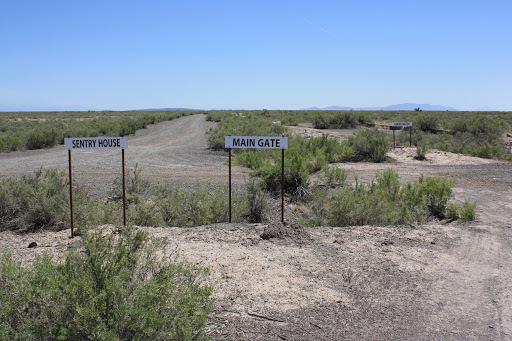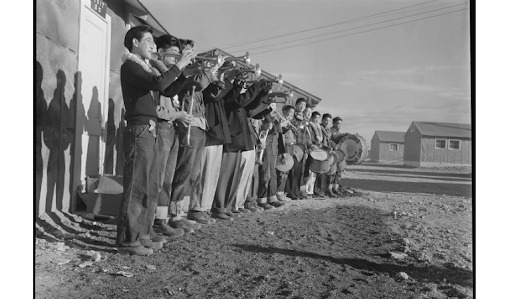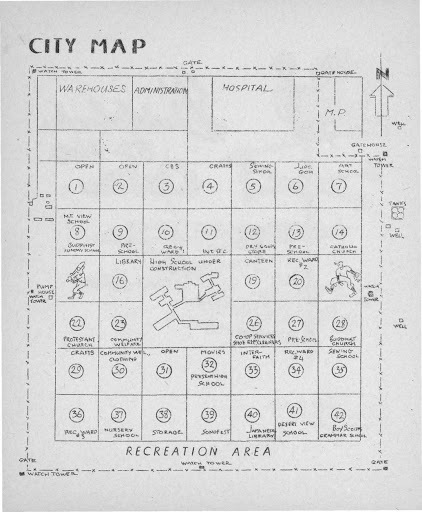Arrival at Topaz: The Gate and Its Meaning

The Topaz experience was prefaced by a mixture of welcoming residents and military presence at the camp’s main gate.
On September 11, 1942, the first group arrived at Topaz War Relocation Center. That day, over 500 people of Japanese descent entered in Delta by train and were loaded onto buses that brought them to the internment site. There were more arrivals throughout the three-year period Topaz operated, all of whom passed through this main gate. It was here they were met with symbols of patriotism and signs of welcome. The residents of the internment camp tried to ease the new arrivals’ worries with these attempts; however, the barbed wire fences and guard towers framing the gate in the black desert-scape sent a contradicting message.
The people interned had been brought from homes on the Pacific coast that were exchanged for Topaz’s desert. It was a bleak sight amidst devastating circumstances. One woman, Yoshiko Uchida, noted her appreciation for the Boy Scouts’ effort to soften the arrival experience: “it was such a touching sight to see them standing in the burning sun, covered with dust and making such a determined effort to lessen the shock of our arrival at this bleak desert camp.” Windswept sand from the barren earth scattered about the Boy Scouts bearing instruments. The interned residents had organized a Boy Scout band to welcome new arrivals by song. The Boy Scouts symbolized patriotism to those arriving at the hand of policies that did not live up to American ideals of justice. Eventually, some men within the camp would volunteer for the war effort, enlisting in the segregated 442nd infantry. As the Boy Scout band played, the U.S. military guards stood nearby, holding rifles and kindling fear in the new arrivals.
Beyond the music of the Boy Scout band, those arriving at the camp were also greeted by signs welcoming them into Topaz. These signs had welcoming phrases such as “Welcome to Topaz: Jewel of the Desert” or “Welcome to Topaz—Your Camp.” However, these signs, whether intentionally or not, covered the truth of the internment experience. For example, one sign describes the camp as a “Jewel,” yet residents were forced to live in close quarters, surrounded by armed guards and barbed wire. Describing it as a “Jewel” hides the reality of what it was really like to live there. Another sign, recounted by Uchida, describes Topaz as “[their] camp.” However, the camp was run by the War Relocation Authority, not the residents. It was surrounded by the military and had strict rules and procedures. As one resident described, “rifles were pointed at us, not outward” (Stone). Although the sign claimed that the camp belonged to them, their surroundings told a different story. The desert landscape and military presence sent a message of fear that overcame the tokens of welcome.
Images


